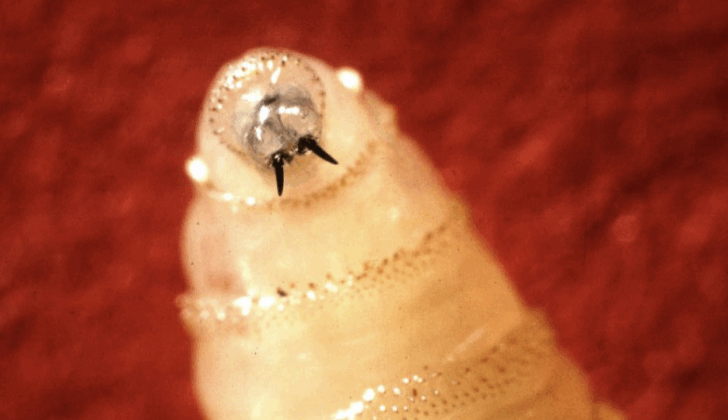In recent headlines, a rare yet alarming organism has resurfaced: the New World screwworm, a flesh-eating parasite. With the first human case in decades identified in the U.S., it’s natural to feel concerned—but what exactly is this creature, and how real is the risk?
Let’s explore the details in a clear, easy-to-understand guide.
What Is the Screwworm?
The New World screwworm (Cochliomyia hominivorax) is a parasitic blowfly whose larvae feed on living flesh, not dead tissue like many other carrion-feeding maggots. It was once eradicated in the U.S. thanks to an aggressive sterile-insect release program, but has recently reemerged in Mexico and Central America.
The First Recent U.S. Human Case
In August 2025, a Maryland resident who traveled to El Salvador was diagnosed with a screwworm infection—the first U.S. human case linked to current outbreaks in Central America. The individual has recovered, and there was no evidence of local spread. Still, health officials stress the public health risk remains low.
How Dangerous Is the Screwworm?
-
The screwworm larvae burrow into open wounds or natural openings (like eyes, nose, or mouth) and feed on living tissue. This can cause severe tissue damage, infection, and pain.
-
While livestock are most at risk—where screwworm infestations can devastate herds and cost the industry billions—the risk to humans remains extremely rare.
-
Prompt surgical removal of larvae and wound care are critical to preventing serious complications.
What Are Authorities Doing?
The USDA is ramping up protective measures, including constructing a sterile fly facility in Texas capable of producing 300 million sterile males weekly to halt the screwworm’s spread.
These efforts echo a successful eradication campaign from the 1950s and 1960s, which eliminated screwworms from much of the U.S.
What Can You Do?
If you’ve recently traveled to a screwworm-endemic area or were outdoors with an open wound, here’s what to do:
-
Clean and cover wounds immediately.
-
Use insect repellent and protective clothing.
-
Watch for persistent wounds that worsen or emit a bad odor.
-
Seek medical care if you notice movement in a wound or unexplained skin irritation post-travel.
Should We Panic?
No. Human screwworm infections remain extremely rare, and the latest case is considered travel-associated—not the start of a domestic outbreak. With proactive measures and continued vigilance, the risk remains low.
Final Thoughts
The screwworm, known as a “flesh-eating parasite,” evokes fear—and for good reason. Yet, thanks to advanced surveillance, prompt treatment, and sterile insect programs, the threat to human health is minimal. The key takeaway? Be mindful, prepared, but not alarmed.












